The South Acton Water Treatment Plant was completed in June of 2015 and has a capacity of 1.7 MGD.
The raw water from each source (School St. and Assabet) is first aerated through dedicated packed tower aeration systems. The aeration process removes volatile compounds, raises the pH of the water, and provides initial oxidation. The aerated water then enters the rapid mix tanks where potassium perman- ganate is injected for final oxidation and potassium hydroxide is injected for additional pH adjustment. If needed in the future, the tanks are also equipped with a coagulant injection system (polyaluminum chloride) for color and organics control. The chemi- cally treated water then flows through parallel flocculation tanks to form floc and then into an equalization tank. From there the pre-treated water is pumped to dedicated feed water storage tanks lo- cated on each membrane skid. Water is then filtered through microfiltration membranes via dedicated permeate pumps. After filtration, the water is treated with sodium hypochlorite for disinfection and sodi- um fluoride for fluoridation prior to entering a baffled clearwell for contact time before being pumped into the distribution system.
For cleaning of the membranes, Flux-Maintenance and Clean-in-Place (CIP) processes are included. In general, backwash water from the process is sent to recycling tanks. From there, supernatant is pumped back to the rapid mix tanks for additional treatment and collected solids are sent to either on-site lagoons or the sewer.
Aerial Drone Flyover - 5/1/2017
The South Acton Water Treatment Plant has been operating at a high level of efficiency for two years. The primary purpose of the plant is the removal of naturally occurring iron & manganese from five of the District’s wells. The plant filters about 40% of the District’s supply. Please enjoy this brief aerial tour




